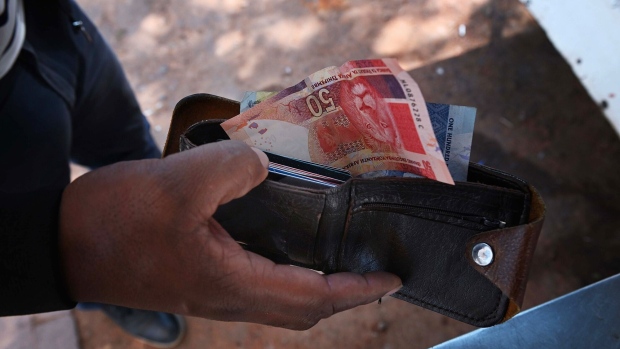Mar 28, 2024
South Africa’s Rand Pares Loss After Surprise Monthly Surplus
, Bloomberg News

(Bloomberg) -- The rand reversed earlier losses after data showed the government unexpectedly recorded a budget surplus in February, only the second positive reading since July.
The rand pared a decline of as much as 1% against the dollar to trade 0.1% weaker at 18.9345 by 5:57 p.m. in Johannesburg after National Treasury figures showed that the budget swung to a surplus of 20.8 billion rand ($1 billion) in February. The median estimate of four economists in a Bloomberg survey was for a deficit of 7.5 billion rand.
“The consensus forecast was arguable overly pessimistic, being based on the provisional financing figures, which included a 14 billion-rand debt-relief payment to Eskom,” said Carmen Nel, head of multi-asset strategy at Terebinth Capital Ltd. “Given that the debt relief sits below the line, this payment does not form part of expenditure and so would not be part of the main budget balance.”
The funds form part of a 254 billion-rand package announced by Finance Minister Enoch Godongwana in February last year, aimed at strengthening Eskom Holdings SOC Ltd.’s balance sheet to help the utility revive its plans and curb almost-daily power cuts that plague the continent’s most industrialized economy.
Spending curbs — which the National Treasury committed to in its February budget — and a recovery in revenue growth also helped improve the budget balance, Nel said.
For the government to achieve its main budget deficit forecast of 331.4 billion rand in 2023-24, the March shortfall would need to be as small as 3.4 billion, she said.
“This is a very tall order,” Nel said. “The February surplus alone does not have much implication for debt stability and sustainability, as this will ultimately be a function of fundamental reform, stronger growth, and greater prudence on the spending side.”
Treasury forecasts gross debt will peak at 75.3% of gross domestic product in 2025-26.
©2024 Bloomberg L.P.





